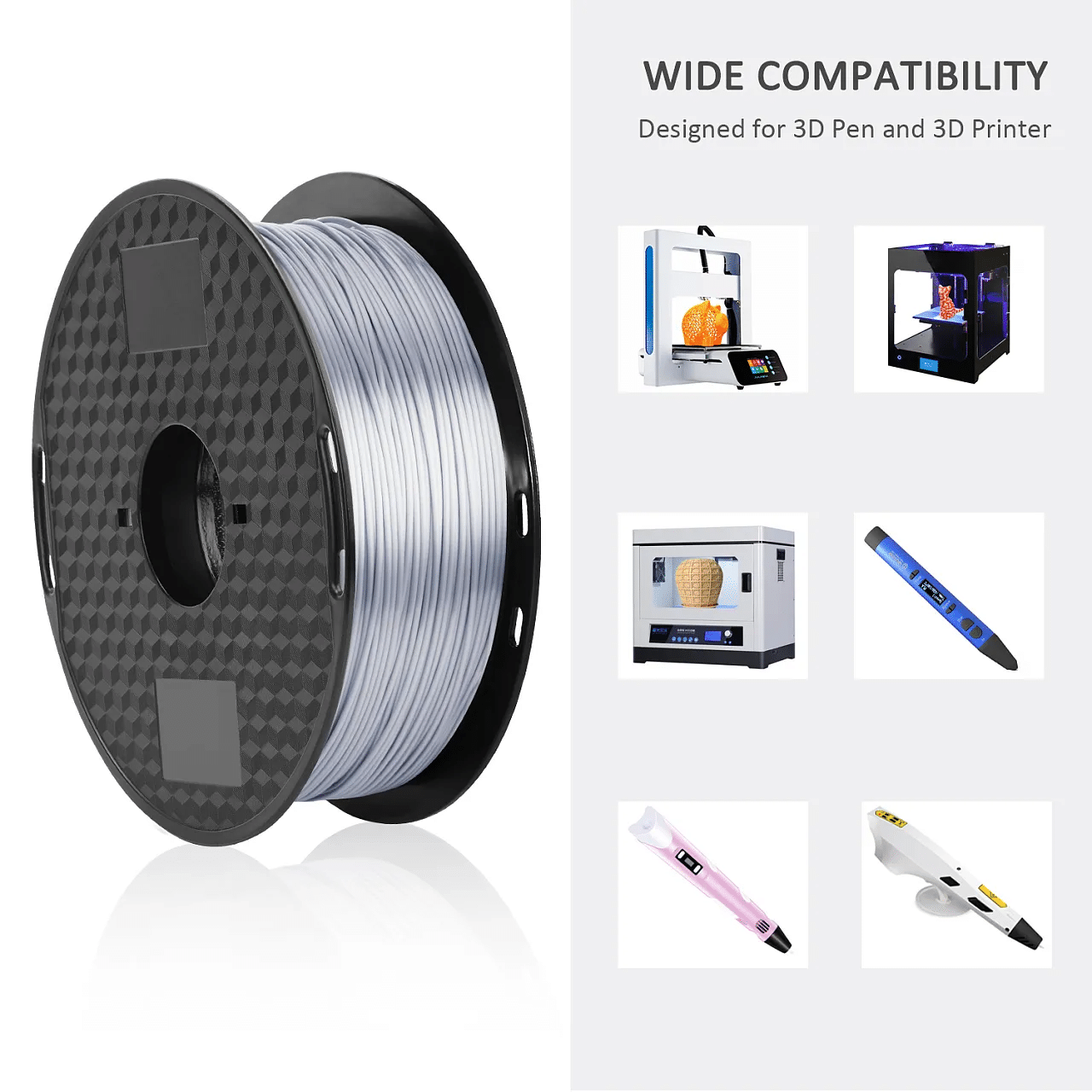In the rapid development of 3D printing technology today, choosing the right printing material is crucial to ensure print quality and finished product performance. PLA (polylactic acid) filament, as a commonly used 3D printing material, has been widely welcomed for its advantages of easy printing, environmental protection and non-toxic. Among them, the non-deformability of PLA filament is a big advantage, and I will explore this feature and its application in 3D printing in detail below.
First, we need to understand the basic properties of PLA filament. PLA is a bio-based plastic that is polymerized from lactic acid produced by the fermentation of renewable resources such as cornstarch and sugarcane. This material shows good fluidity in 3D printing and is able to melt at lower temperatures, thus reducing energy consumption during the printing process. In addition, PLA filament has a low shrinkage rate after printing, which makes it less prone to deformation during the molding process.
The deformability of PLA filament is mainly due to its high thermal stability and mechanical strength.
In the 3D printing process, the model needs to go through the process from high temperature melting to cooling and curing, and the thermal stability of the material directly affects the dimensional accuracy and shape stability of the finished product. Because of its stable molecular chain structure, PLA filament is not easy to decompose at high temperatures and can maintain good dimensional stability. At the same time, PLA filament has a high tensile strength and compressive strength, which makes it difficult to deformation when subjected to external forces, and can meet the needs of a variety of application scenarios.
In practical applications, the non-deformability of PLA filament has won it a wide range of applications in the field of 3D printing.
For example, when making high-precision mechanical parts, the low shrinkage rate and good dimensional stability of PLA filament can ensure the accuracy requirements of parts; When making large models, the high mechanical strength of PLA filament can ensure the structural stability of the model and prevent deformation caused by self-weight or external force. In addition, PLA filament is also widely used in medical, education, art and other fields, providing new possibilities for the development of these fields.
Of course, the non-deformability of PLA filament does not mean that it will not deform under any circumstances. When using PLA filament for 3D printing, the following points still need to be noted to further reduce the possibility of deformation. First of all, choose the appropriate printing temperature and time to avoid material decomposition and deformation caused by too high temperature or too long time; Secondly, the model structure should be designed reasonably to avoid overly complex or weak parts. Finally, after the printing is completed, post-processing is carried out in time, such as removing the support structure, grinding, etc., to improve the surface quality and dimensional accuracy of the finished product.
In addition to PLA filament, there are other types of 3D printing materials on the market, such as ABS, PETG, TPU, etc. These materials have their own characteristics and are suitable for different application scenarios. For example, ABS filament has good toughness and heat resistance, which is suitable for making parts that need to withstand greater external forces; PETG filament has good transparency and chemical corrosion resistance, suitable for making transparent parts and chemical containers; TPU filament has good elasticity and wear resistance, and is suitable for making soft parts and tires. When selecting 3D printing materials, it is necessary to consider the performance characteristics of the materials according to the specific application needs.
In short, the non-deformability of PLA filament is one of its major advantages, which makes it have a wide range of application prospects in the field of 3D printing. With the continuous development and improvement of 3D printing technology, it is believed that PLA filament and other 3D printing materials will play an important role in more fields, bringing more convenience and innovation to our lives.

